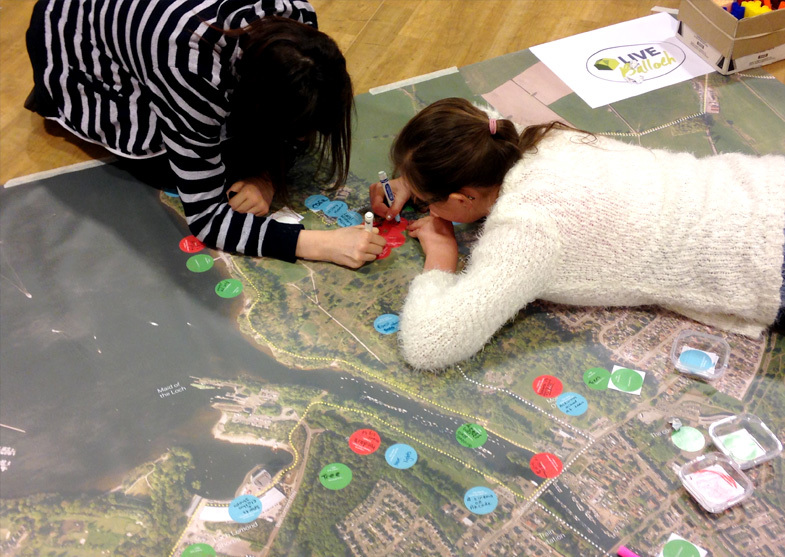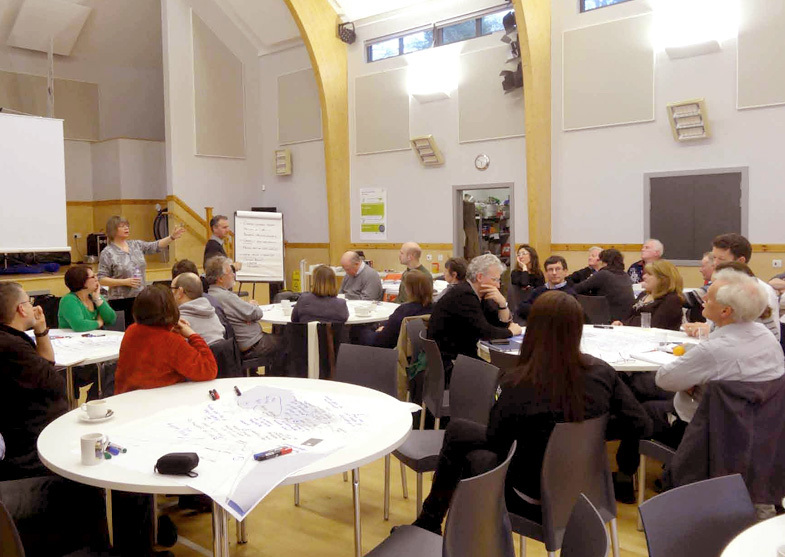
As an architect, there is an immediacy to Charrettes that is reminiscent of helping someone to build their own house. Charrettes, or community design workshops, can directly connect the people who will shape and live in the place, with the designers who can create a shared vision for that place’s future and the people who can facilitate and support that vision. This immediacy combined with a need to come to a collective conclusion within a short time frame gives this process a powerful momentum and can unlock many long standing issues that may get in the way of positive change.
Charrettes as we know them here in Scotland first appeared in 2010 as a Scottish Sustainable Communities Initiative Charrette series. 7N were at the forefront of the subsequent mainstreaming programme, carrying out the Callander Town Charrette back in 2011 and have since carried out around twelve Charrettes, big and small, all over Scotland.
“7N were at the forefront of the subsequent mainstreaming programme, carrying out the Callander Town Charrette back in 2011 and have since carried out around twelve Charrettes, big and small, all over Scotland.”
Over this time, we have learned a lot about Charrettes as a process for involving a wide range of community stakeholders in forward planning for their towns and neighbourhoods. We are interested not only in how to best tailor a Charrette for its own particular context and circumstance, but also how integrating Charrettes in already established local authority planning and community planning processes makes them a much more useful and powerful way to make positive physical change a reality. After all, as architects, we like to see the great places we illustrate on paper become actual physical places that impact positively on people’s lives.
The Charrettes we have carried out with the Loch Lomond & the Trossachs National Park have, thanks to the planning and communications teams at the National Park Authority and the foresight of the Park’s Head of Planning and Rural Development demonstrated how Charrettes can enrich the development of a Local Development Plan, while also integrating with local Community Action Planning. Meaningful engagement is moved upstream in the process. For more on this, see here.
This approach has received national recognition and we think is a great example of how the often adversarial climate of forward planning can be re-focused on much more constructive dialogue about what is actually best for a place.
“Our approach has received national recognition and we think is a great example of how the often adversarial climate of forward planning can be re-focused on much more constructive dialogue about what is actually best for a place.”
For our part, we get to return to the basics of what we do as architects, responding to needs and challenges with creative thinking and good design in a low tech and accessible way. We bring the ability to not only listen, question and record but also to provide a forum for constructive dialogue within the climate of varying opinions and agendas that often characterises debate about the future of a place. This comes from framing everything in the context of what is best for the place as a whole and the wellbeing of its future inhabitants.
We also translate this myriad of comments, opinions and options into a set of deliverable design proposals and a plan for action that has the power and impetus of collective buy-in. It sounds simple, but as anyone who has been involved in a Charrette or community design workshop knows, it’s not. It takes careful planning, strategic communication, transparency from all parties and a lot of energy from all participants. With all of these ingredients however, the value of the outcome and the civic energy that is a welcome by-product of the process demonstrates the power of Charrettes and mean that if Charrettes become an integral part of forward planning our towns and cities, our urban environments will benefit enormously.


